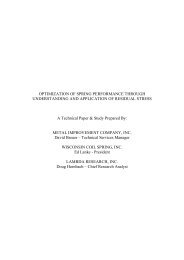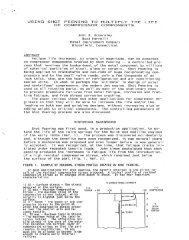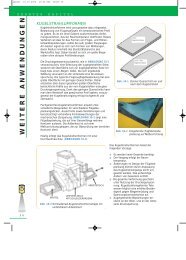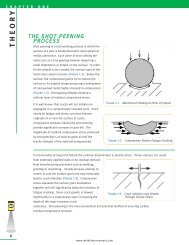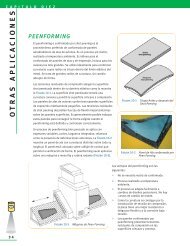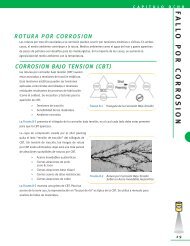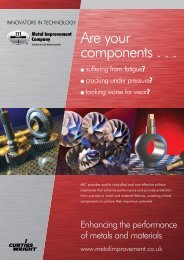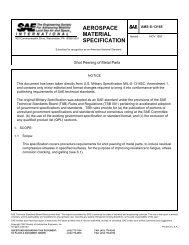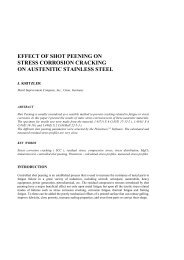MIC Green Book
MIC Green Book
MIC Green Book
Create successful ePaper yourself
Turn your PDF publications into a flip-book with our unique Google optimized e-Paper software.
C H A P T E R T E N<br />
O THER APPLICATIO NS<br />
36<br />
EXFOLIATION CORROSION<br />
A large number of commercial aircraft are over 20 years old. Ultimately, the safety of older aircraft depends<br />
on the quality of the maintenance performed. An aged Boeing 737 explosively depressurized at 24,000 feet<br />
(7300 m) when 18 feet (6 m) of the fuselage skin ripped away. The cause of the failure was corrosion and<br />
metal fatigue [Ref 10.3].<br />
<strong>MIC</strong> has developed a process called Search Peeningsm to<br />
locate surface and slightly sub-surface corrosion. Exfoliation<br />
corrosion is a form of intergranular corrosion that occurs<br />
along aluminum grain boundaries. It is characterized by<br />
delamination of thin layers of aluminum with corrosion<br />
products between the layers. It is commonly found adjacent<br />
to fasteners due to galvanic action between dissimilar metals.<br />
In exfoliation corrosion, the surface bulges outward<br />
as shown in Figure 10-8. In severe cases, the corrosion<br />
is subsurface.<br />
Once corrosion is present repairmen can manually remove it with sanding or other means. Shot peening is<br />
then applied to compensate for lost fatigue strength as a result of material removal. Additional sub surface<br />
corrosion will appear as "blisters" exposed from the shot peening process. If additional corrosion is found,<br />
it is then removed and the Search Peeningsm process repeated until no more "blistering" occurs.<br />
<strong>MIC</strong> is capable of performing the Search Peeningsm on site at aircraft repair hangers. Critical areas of the<br />
aircraft are masked off by experienced shot peening technicians before beginning the process.<br />
POROSITY SEALING<br />
Surface porosity has long been a problem that has plagued the casting and powder metal industries.<br />
Irregularities in the material consistency at the surface may be improved by impacting the surface with shot<br />
peening media. By increasing the intensity (impact energy), peening can also be used to identify large,<br />
near-surface voids and delaminations.<br />
INTERNAL SURFACES AND BORES<br />
When the depth of an internal bore is greater<br />
than the diameter of the hole it cannot be<br />
effectively shot peened by an external method.<br />
An internal shot peening lance or internal shot<br />
deflector (ISD) method must be used under<br />
closely controlled conditions (Figure 10-9).<br />
Holes as small as 0.096 inch (2.4 mm) in<br />
jet engine disks have been peened on a<br />
production basis using the ISD method.<br />
Potential applications for internal shot<br />
peening include:<br />
• Tie wire holes • Propeller blades<br />
• Hydraulic cylinders • Shafts with lubrication holes<br />
• Helicopter spars • Compressor and turbine disk blade slots<br />
• Drill pipes<br />
www.metalimprovement.com<br />
Figure 10-8 Exfoliation Corrosion<br />
Figure 10-9 Lance Peening and Internal Shot Deflector Peening



